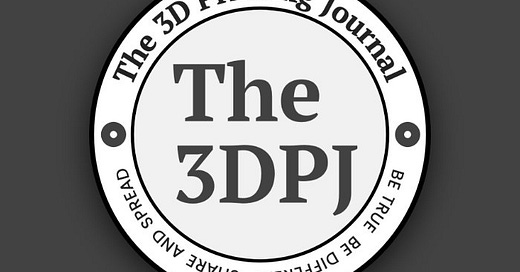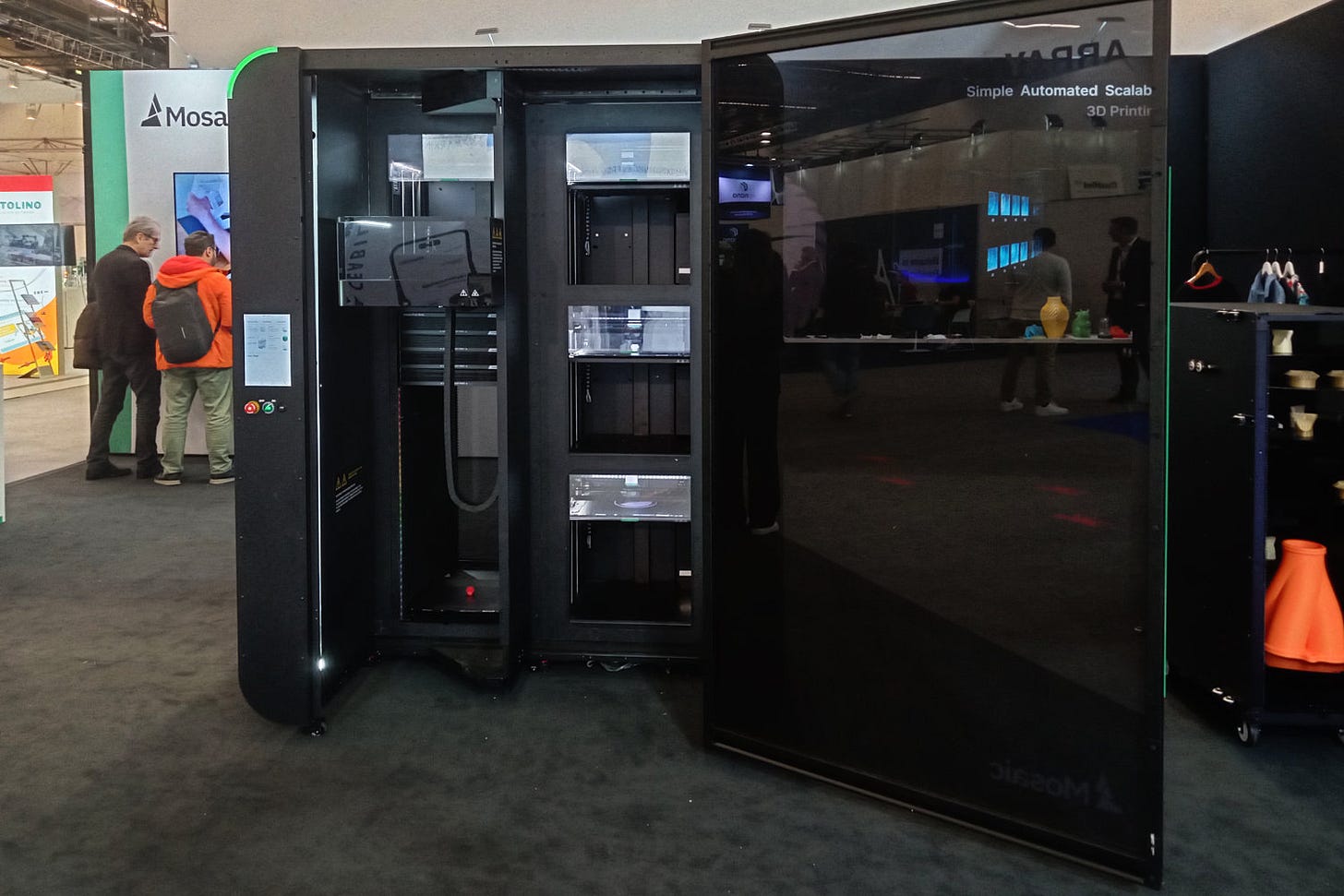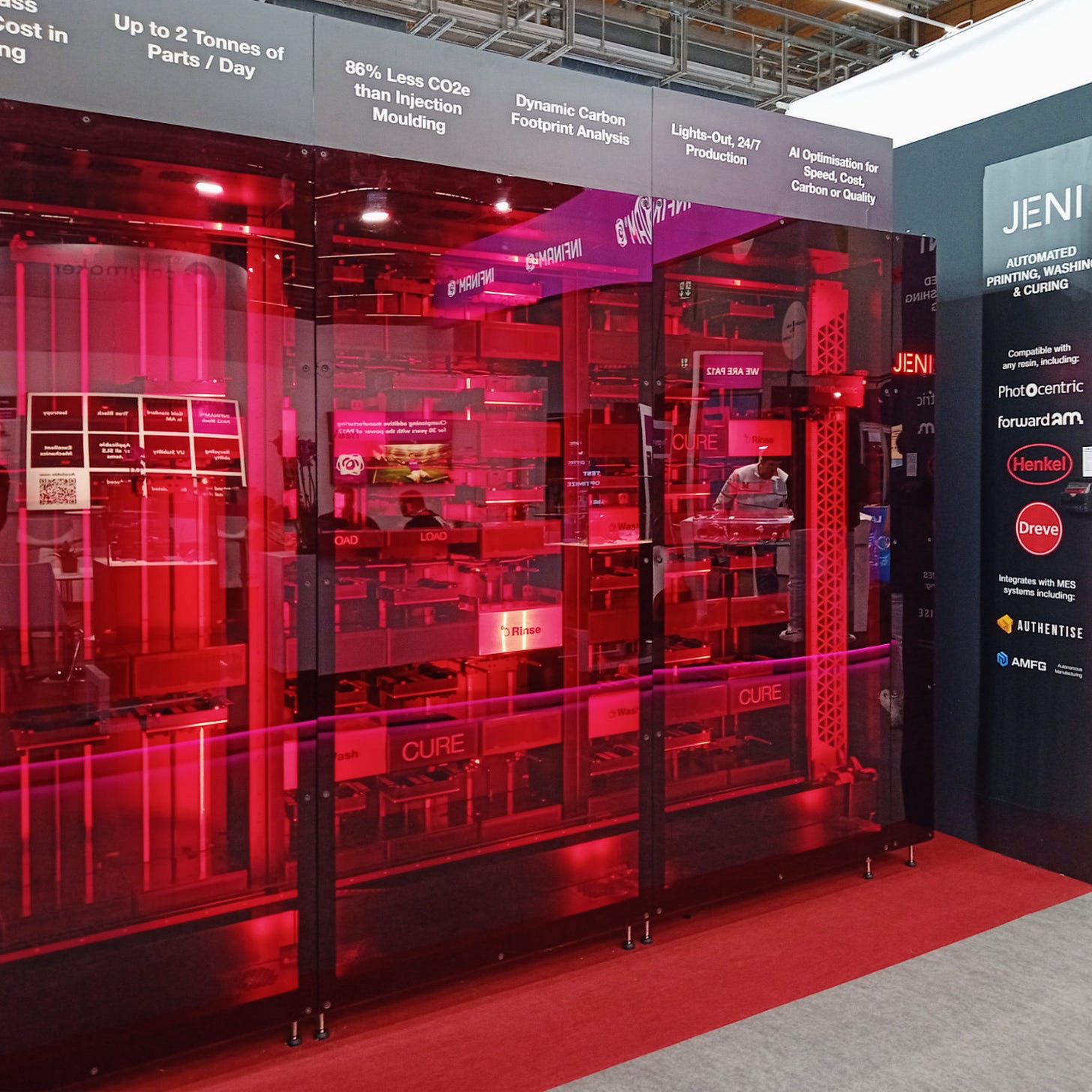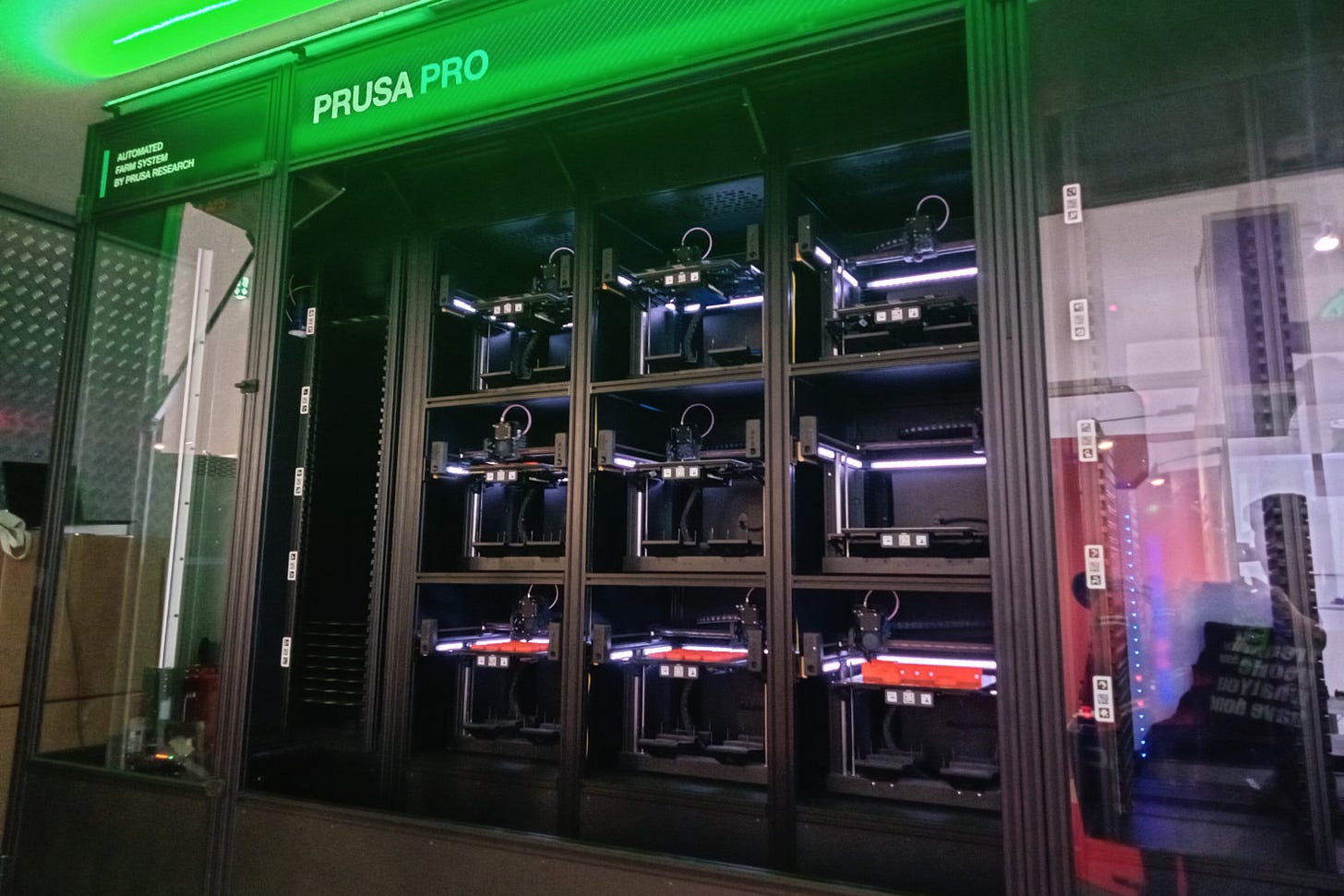Mosaic, Photocentric, Prusa and the growing importance of automation in 3D printing
The Atomic Layers: S5E1 (00117)
Atomic Layer of the Day:
If I had to pick one thing that truly impressed me at Formnext, it would be the Canadian company Mosaic. A few people I spoke with know what I mean, but I’ll save more official details for next year. For now, I’ll focus on the company’s flagship product, Array—an automated system for serial production using FFF technology.
While we’re on the topic of Array, it would be a sin not to mention its "photopolymer" counterpart, JENI by the British company Photocentric. And since I’m listing these two solutions, I should also mention the third—AFS by Prusa Research.
Mosaic's Array is based on FFF technology and integrates up to four high-temperature Element HT printers capable of handling advanced materials like PEEK and ULTEM. Each printer includes Mosaic’s Palette X for multi-material and multi-color printing. The system is fully automated, featuring slots for dozens of auto-swappable material spools and print beds, all exchanged automatically. Array is designed as a modular cabinet, easy to transport or link with others to create multi-station setups.
Photocentric's JENI uses photopolymer resin printing with LCD-based curing. This modular system integrates printing, washing, and curing processes for high-speed production, aiming to replace traditional injection molding for mid-to-large-scale production. It emphasizes fast, accurate, and tool-free manufacturing.
Prusa Pro's AFS also uses FFF technology and essentially functions as an automated print farm with robotic handling of print beds.
If you’ve seen these systems in action, you probably found the vibrant red JENI the most striking. However, as I mentioned, my personal favorite is Array, as I understood its practical applications while at their booth.
In general, I want to emphasize something broader: It's clear that to use 3D printers for large-scale end-part production, the printers alone are not enough. We need integrated software systems to manage operations from a central computer, along with automation to minimize human involvement. Automatic platform swapping, where prints are completed every 2-3 hours, enables production to scale overnight.
Currently, you can count the number of manufacturers creating such systems on one hand, but over time, we should expect to see more of these solutions.
Atomic Layer from the Past:
12-01-2010: 3D Systems introduced the ProJet HD 3000plus.
News & Gossips:
3D Systems' poor performance has impacted its stock price. Over the past week, shares fell by nearly 7%, bringing its market value down to $397 million. Meanwhile, Stratasys' market value stands at $685 million, creating a difference of over 40% between the two companies. This is particularly interesting because just a year ago, 3D Systems was aiming to acquire Stratasys.
Tomorrow, I invite you to check out my weekly LinkedIn newsletter. It’s going to be juicy... We'll talk again about Chinese dominance in AM.
IPFL, a plastics manufacturing company, has released its latest material, Tough Carbon Black, for micro 3D printing.







